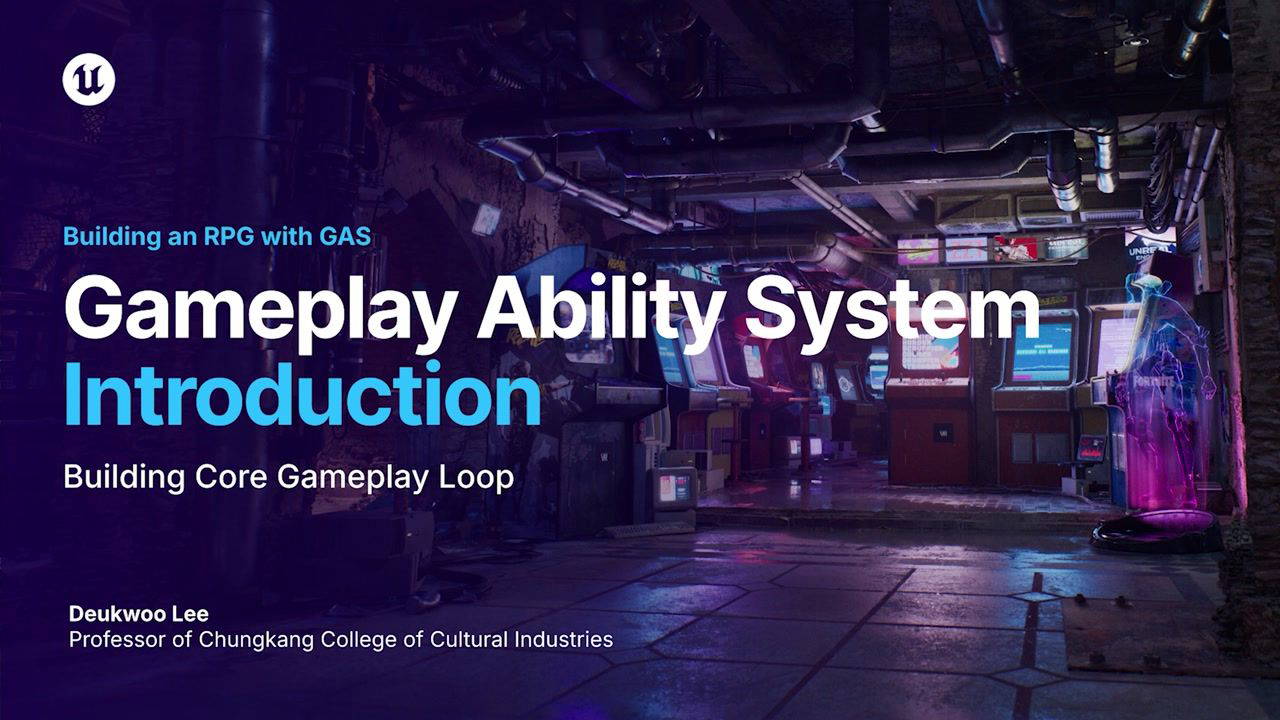
Mastering the Gameplay Ability System: Epic's Guide for Your RPG
The Gameplay Ability System (GAS) in Unreal Engine isn't just a plugin; it's the architecture that powers the most sophisticated combat systems and gameplay mechanics. Epic Games has distilled this complexity into a structured course, "Building an RPG with Gameplay Ability System," a fundamental resource for anyone looking to build a robust and scalable Action RPG.
Below, we analyze the course index, which reveals the logic and progression of this powerful framework.
Getting Started
This section introduces the GAS framework and prepares the development environment.
Introduction to Building an RPG with Gameplay Ability System: Explores GAS and illustrates its key components. The focus is on the benefits it offers compared to traditional development methods and the presentation of the roadmap for transforming a simple project into a complete Action RPG.
Getting Started with GAS: Teaches the basic setup for GAS within your project. You'll learn how to use Gameplay Tags to flexibly tag and categorize game elements like states, abilities, and damage types.
Gameplay Abilities, Events, and Attributes
These modules build the interactive core of any RPG: what the character does and with what stats.
Gameplay Abilities: The core of the actions. You'll learn how to construct a basic ability that triggers in response to player input, giving life to the character's specific actions (e.g., a basic attack or a dash).
Gameplay Events: Explains how to implement interaction between actors (characters and objects). This module shows how to make the system react to external events, applying the standard GAS workflow (for example, when one actor comes into contact with another).
Attributes: Guides you through creating the Attribute Set, defining, and managing all of the character's core statistics, such as Health, Mana, and Strength values.
Instant Gameplay Effects, Meta Attributes, Gameplay Cues
This part delves into how to apply immediate changes and how to manage the calculation pipeline and aesthetics.
Instant Gameplay Effects: Learn the technique for applying an effect that occurs instantly and once. The primary example is applying basic damage to reduce an opponent's Health attribute.
Meta Attributes: Introduces an advanced and crucial concept: the use of Meta Attributes to create a flexible damage calculation pipeline. These temporary attributes are essential for calculating the final damage (taking into account defenses and buffs) before applying the change to the real attribute.
Gameplay Cues: Teaches you how to use Gameplay Cues to trigger all the visual effects (VFX) and sound effects (SFX) related to an ability or effect, separating the aesthetic from the game logic.
Data Driven System, Durational Gameplay Effects, and Wrapping Up
The final modules cover optimization, balancing over time, and project conclusion.
Data Driven System: The module on data-driven programming. You'll learn how to implement a scalable and easily balanceable leveling system using Data Tables. This allows designers to modify game values in external spreadsheets without touching the programming code.
Durational Gameplay Effects: Covers the management of effects that persist over time. You'll learn how to implement Damage-Over-Time (DOT), periodic regeneration, temporary invincibility, and stacking buffs.
Wrapping Up Building an RPG with Gameplay Ability System: The final lecture reviews the core concepts learned in the course and offers strategies and best practices for applying GAS in real-world, professional projects.
In brief, this learning path provides a comprehensive overview, enabling developers to create game systems in Unreal Engine.
You can find the course link here
Latest posts

PBL Database: realistic lighting for UE5.7 by Arthur Tasquin
Discover Arthur Tasquin's PBL Database: the toolbox for UE5.7 that teaches you how to manage light realistically, with correct physical values and reliable references. Perfect for learning and improving your workflow.

Buona la Prima - Episode 38
The Great Debate: Self-Publishing vs. Traditional Publishing

A Step Towards Interoperability: Unity and Epic Games Announce Strategic Collaboration
Unity and Epic Games are partnering to create a more open gaming ecosystem. The agreement brings Unity games to Fortnite and Unreal Engine support to Unity's e-commerce platform.